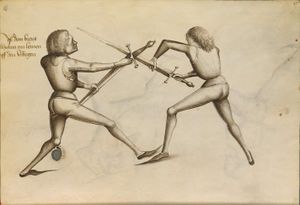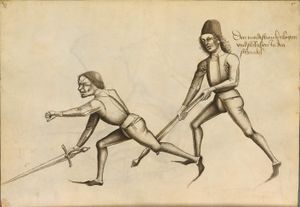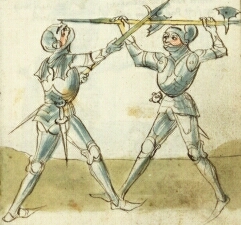Makes sense to me. A reach weapon (especially a polearm) should have a difficult time reacting to (that is, triggering reactions from) enemies that are within its reach. And, note, the ability to OA an enemy that never even closes to within 5 feet of you has tactical applicability. And tactical applicability is why polearms exist, in the first place.
Except this explanation has nothing to do with how or why it works the way it does; nor is this understanding of polearms (or reach weapons in general) correct.
An enemy moving out of that first five foot area into one ten feet away simply means that they haven't left the area a polearm wielder threatens (their "Reach"). A creature only triggers an AoO if they
leave a threatened area (a creatures reach). Period. That's it. There is no other consideration.
And a reach weapon merely adds 5 feet to one's reach. It does not take away the ability to attack creatures, nor penalize such attacks, within 5 feet. Nor should they.
Even in historical combat, a polearm did not add extra difficulty to attacking or defending against enemies "within its reach." In fact, it was quite good at it.
Polearms, same as swords, are not used in one strict manner. Just as swords are commonly used in a half-sword grip (held with a hand on the blade), used to bludgeon with the pommel of the hilt, and even used the quillons/cross-guard to hook a neck, trip a leg, or just poke out an eye, polearms are designed to be used in multiple ways. They can just as effectively be used as a staff for defense, a choked-up grip for close-in fighting (much like half-swording), as a device to trip or hook, or unseat a horseman, and its standard use as a stand-off, "reach" slashing or piercing weapon.
Pole-arms are just as effective against opponents within 5 feet as they are against opponents at the reach of the weapon.
In D&D combat, these type of attacks are happening all of the time, it's just that it's only apparent through narration (whether DM or Player). D&D attack rolls are an abstract quantification; they can be one single attack or a quantification of all of a creature's attempts during a round. Whether stabbing with a sword, slashing with a sword, half-swording or attacking with the hilt/cross-guard, if one makes a successful attack roll, one applies the damage roll of that weapon (or if you prefer: the arbitrarily statistical damage potential of that weapon). That's it. Period. Then narrate it any way one wants to (as long as the narration simply describes the damage and it's mode of delivery, and not an effect or result outside of mere injury).
D&D attacks certainly do not mean that a weapon is always used one way and one way only; nor that they are only effective one way.















